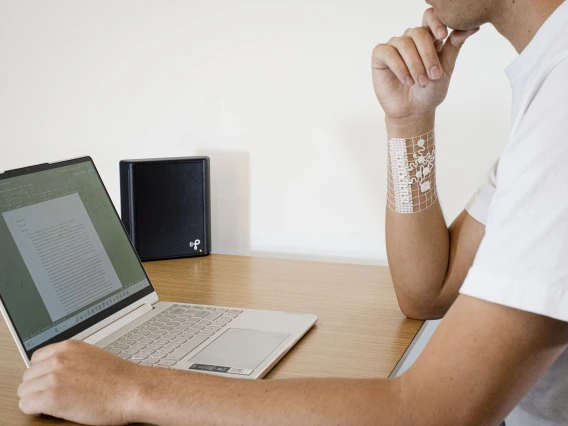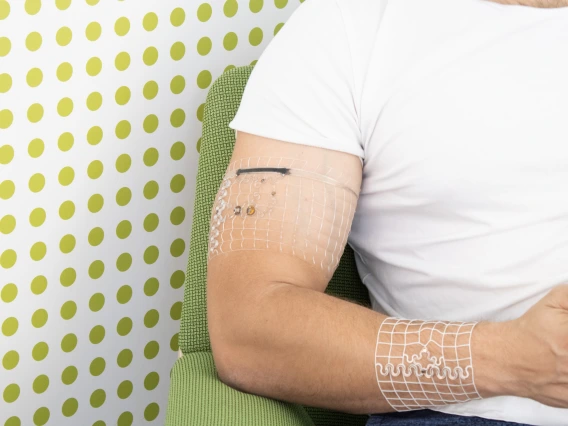Longer-lasting wearables set to transform health monitoring
U of A engineers expect the non-adhesive forearm band to advance physiological tracking associated with sports science, mental health and chronic disease management.

The Gutruf Lab's wearable device provides personalized health data without the constraints of adhesives and frequent reapplication.
Wearable technologies are revolutionizing health care, but design limitations in adhesive-based personal monitors have kept them from meeting their full potential.
A University of Arizona study, published in Nature Communications May 10, describes a longer-lasting, 3D-printed, adhesive-free wearable capable of providing a more comprehensive picture of a user's physiological state.
The device, which measures water vapor and skin emissions of gases, continuously tracks and logs physiological data associated with dehydration, metabolic shifts and stress levels.
"Wearable health monitoring traditionally depends on sensors that directly attach to the skin, but the skin itself constantly renews," said Philipp Gutruf, an associate professor of biomedical engineering and member of the BIO5 Institute at the U of A who co-authored the study with lead author David Clausen, a doctoral student and researcher in the Gutruf Lab.
"This limits how long you can collect reliable data. With our sensor that tracks gaseous emissions from the skin, we overcome this constraint entirely," Gutruf said.
Skin shedding weakens adhesives and clogs sensors, so wearables applied with adhesives must be reapplied every few days. Researchers in the Gutruf Lab at the U of A designed a device, worn on the forearm, that resembles a small 3D-printed cuff and can be worn continuously. The device sensors constantly measure gases emitted by the user, comparing their concentrations against normal outside air.
Unlike adhesive-based sports science and health monitoring wearables, which historically only record snapshots, the device developed by Gutruf and his colleagues delivers continuous, real-time data viewable on a smartphone or computer via secure Bluetooth.
"This opens an entirely new space of biomarkers," said Gutruf. "For example, you can capture the metabolic signatures of exercise or stress without interrupting the subject's normal routine. Previously, measurements of this kind required an entire room of equipment."
Practical applications, proven results
With a device such as this, athletes can monitor hydration and exertion during training. The wearable could also record mental health and chronic disease symptoms to aid in prevention and treatment. In fact, tracking and monitoring physiological signs of stress in gas emissions can even help identify early metabolic disturbances, Gutruf said.
"Our design is stable even when exposed to everyday movement and environmental changes," said Clausen. "We're able to record data continuously over many days without recharge, all while capturing rich physiological data that isn't typically possible in a wearable format or requires visible sweat."
The researchers plan to expand the range of detectable biomarkers and integrate advanced data analytics to provide personalized health insights over even longer periods.
The research was funded by Arizona's Technology and Research Initiative Fund, the Moore Foundation and with a discretionary award provided to Gutruf as the College of Engineering's 2024 da Vinci Fellow.
Read the full story at University of Arizona News.



